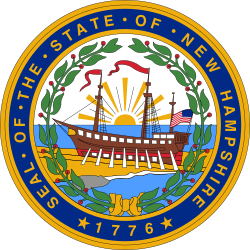| |||||||||||||||||
| |||||||||||||||||
 County results Blood: 50-60% 60-70% 70-80% Neal: 50-60% | |||||||||||||||||
| |||||||||||||||||
| Elections in New Hampshire |
|---|
 |
The 1942 New Hampshire gubernatorial election was held on November 3, 1942. Incumbent Republican Robert O. Blood defeated Democratic nominee William J. Neal with 52.18% of the vote.

